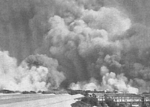Church of Our Lady of Health, Cavel
19th-century Roman Catholic church buildings in IndiaRoman Catholic churches completed in 1812Roman Catholic churches in MaharashtraRoman Catholic churches in MumbaiUse Indian English from May 2018
The Church of Our Lady of Health, Cavel is a Roman Catholic church under the Archdiocese of Bombay. It was built by the Portuguese in 1794, when it was a chapel under the Padroado jurisdiction.
Excerpt from the Wikipedia article Church of Our Lady of Health, Cavel (License: CC BY-SA 3.0, Authors).Church of Our Lady of Health, Cavel
P D' Mello Road, Mumbai Wadi Bandar (Zone 1)
Geographical coordinates (GPS) Address Nearby Places Show on map
Geographical coordinates (GPS)
| Latitude | Longitude |
|---|---|
| N 18.949126 ° | E 72.840557 ° |
Address
P D' Mello Road
P D' Mello Road
400003 Mumbai, Wadi Bandar (Zone 1)
Maharashtra, India
Open on Google Maps









